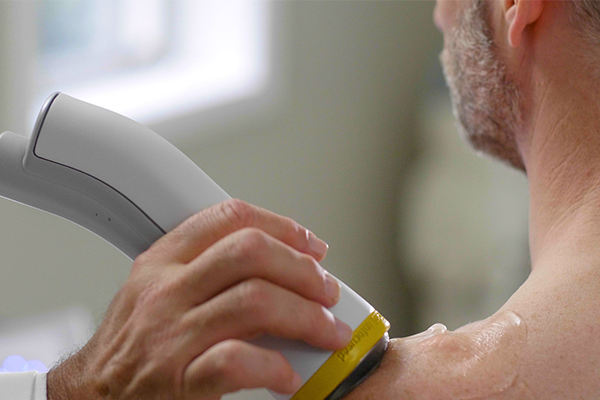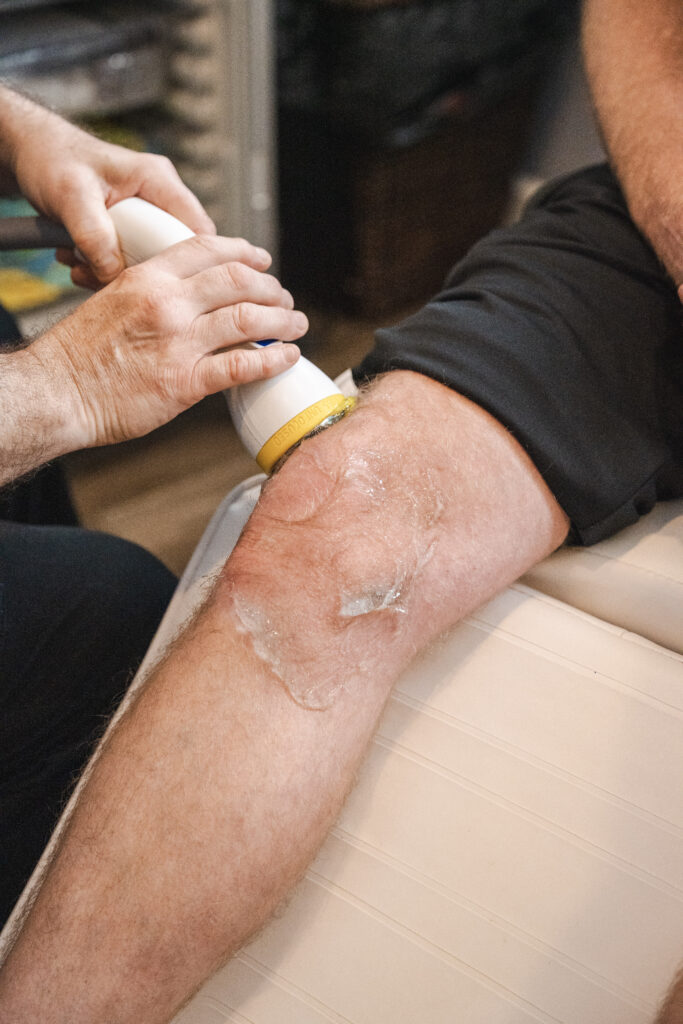Neck pain can be a result of various factors, ranging from poor posture to underlying medical conditions. Here are some of the most common causes of neck pain:
- Muscle or ligament strains: Overuse, incorrect posture, or sudden movements can cause strains or sprains in the neck’s muscles and ligaments, leading to pain.
- Herniated or bulging discs: The discs between the cervical vertebrae in the neck can bulge or herniate, causing pressure on the nerves in the neck and leading to pain.
- Arthritis: This degenerative joint disease can affect the neck, causing pain and stiffness.
- Spinal stenosis: This condition occurs when the spinal canal in the neck region narrows, putting pressure on the nerves and causing pain.
- Injuries from accidents or sports: Falls, car accidents, and sports-related activities can cause injuries to the neck, resulting in pain.
- Medical conditions such as degenerative disc disease or fibromyalgia: These conditions can cause chronic neck pain.
It’s important to note that these are just some of the most common causes of neck pain. If you are experiencing knee pain, you can learn if your condition is suitable for treatment and try shockwave therapy with our New Patient Special.
Benefits of Shockwave Therapy for Neck Pain
Shockwave therapy is a promising non-invasive treatment that can offer a variety of benefits for neck pain. This therapy uses high-energy shock waves to stimulate healing in the affected area. Here are some of the advantages of using shockwave therapy for neck pain:
Accelerated Healing
Shockwave therapy uses high-energy sound waves to encourage the body’s natural healing process. This can help speed up the healing of damaged tissues, including muscles and ligaments, especially useful for those suffering from chronic or recurring neck pain.
Reduced Need for Medications
Traditional treatments for neck pain often involve medications that may have unwanted side effects. Shockwave therapy is a medication-free alternative that can reduce the need for pain medication or other treatments, making it an attractive option for those preferring non-pharmaceutical treatments.
Improved Quality of Life
Neck pain can significantly hinder quality of life, making daily activities or hobbies challenging. Shockwave therapy can help reduce pain and improve mobility, allowing patients to return to their normal activities and enhance their quality of life.
Non-Invasive and Safe
Unlike many neck pain treatments, shockwave therapy is non-invasive and safe. It does not require incisions or anesthesia and has a low risk of complications. This makes it a good option for those who want to avoid more invasive treatments.
Overall, shockwave therapy is a promising treatment option for those suffering from neck pain.
How Shockwave Therapy Works
Shockwave therapy is a non-invasive treatment that uses high-energy acoustic waves to stimulate the body’s natural healing process. Here’s how it works:
What is a Shockwave?
Shockwaves are rapid acoustic pulses that consist of a high-pressure surge followed by a comparatively lower-pressure trough. These phenomena are part of everyday life and can be produced by various sources such as supersonic aircraft, explosions, lightning, earthquakes, or any other event causing a change in air pressure.
How do Shockwaves Treat Neck Pain?
A device is used to produce and safely deliver shockwaves to the affected neck area. These shockwaves can promote healing at the cellular level, improve blood supply, and initiate the body’s natural healing process.
Types of Shockwave Therapy
While there are many types of shockwave therapy, the three most common are radial shockwave therapy (RSWT), focused shockwave therapy (FSWT), and acoustic wave therapy (AWT). Unfocused Shockwave Therapy is also a prominent treatment method for neck pain.
Radial Shockwave Therapy employs a hand-operated device to transmit pressure waves to the surface of the skin. It is a widely used therapy for managing ailments such as plantar fasciitis, Achilles tendinopathy, and tennis elbow. However, its efficacy may be limited in cases of deeper tissue injuries, and patients might necessitate multiple sessions for optimum results.
Focused Shockwave Therapy utilizes a device that sends high-powered shockwaves directly to the problem area. This therapy is frequently used to treat chronic ailments like plantar fasciitis and bone fractures that exhibit slow healing. Nevertheless, some patients might find this therapy somewhat uncomfortable, and the treatment intensity may need to be customized based on individual patient needs.
Acoustic Wave Therapy operates a device that emits low-powered shockwaves to the impacted area. This therapy is regularly employed to enhance blood circulation, alleviate pain and inflammation, and foster tissue healing. It is commonly used for treating conditions such as erectile dysfunction and cellulite. However, its low-intensity shockwaves might not effectively treat certain conditions.
Unfocused Shockwave Therapy dispenses high-powered shockwaves that penetrate a broader and deeper tissue region (7cm x 12cm) than either focused shockwaves (1cm x 12cm) or radial waves (2cm x 2cm). SoftWave for neck pain is the only unfocused shockwave treatment available in the US. Unfocused shockwaves can treat the same conditions as conventional focused shockwave therapy while offering superior relief for significant joint and muscle issues like shoulder, neck, or back pain. Additionally, unfocused shockwaves might necessitate fewer sessions compared to radial or focused shockwave therapies.






